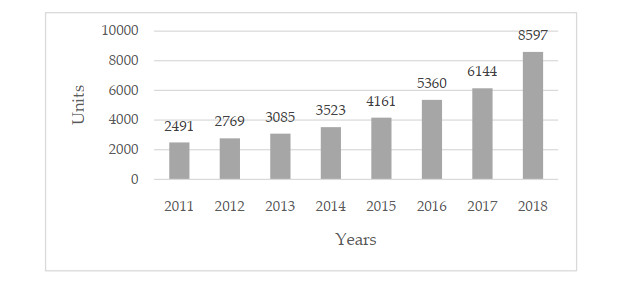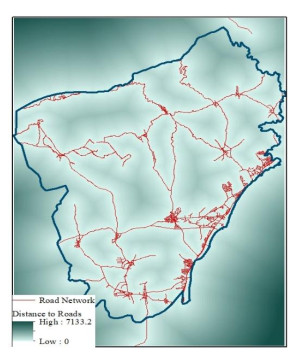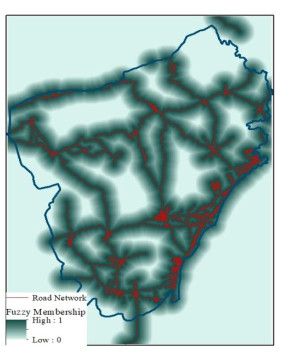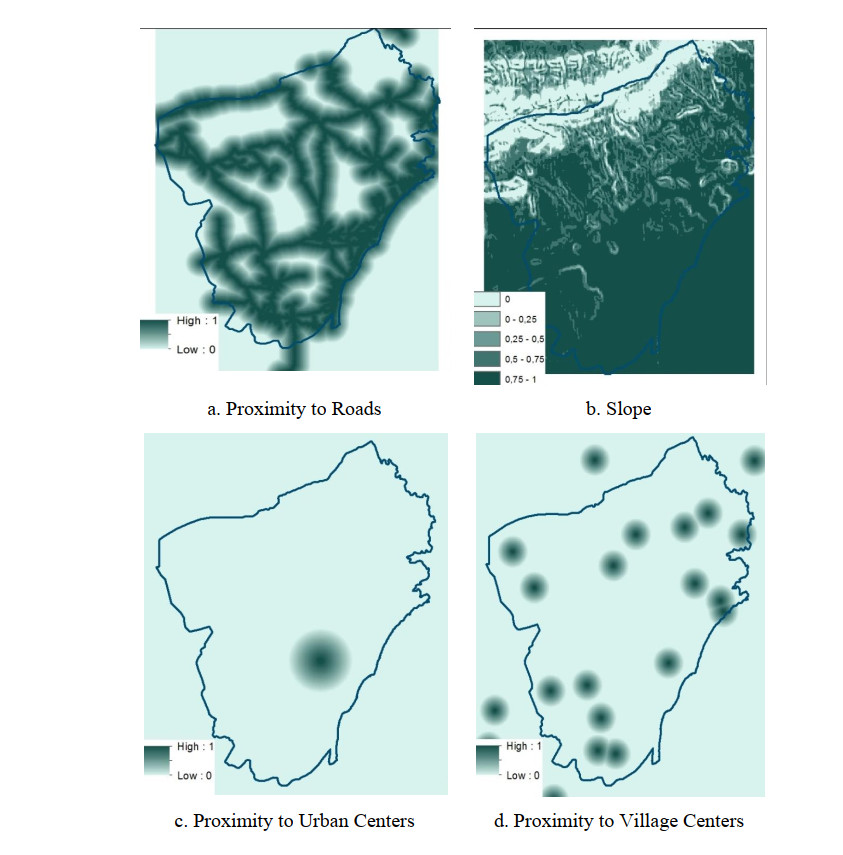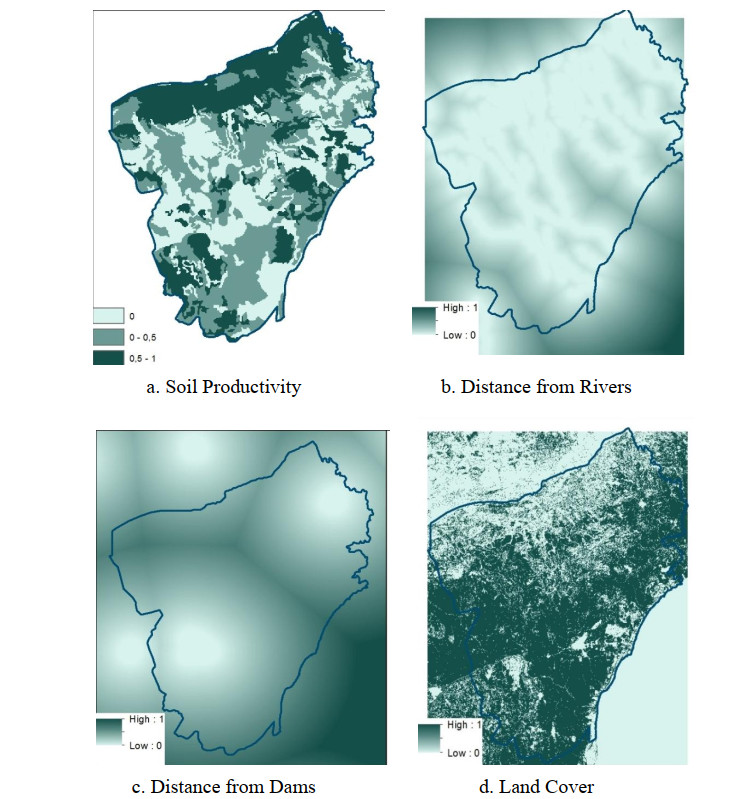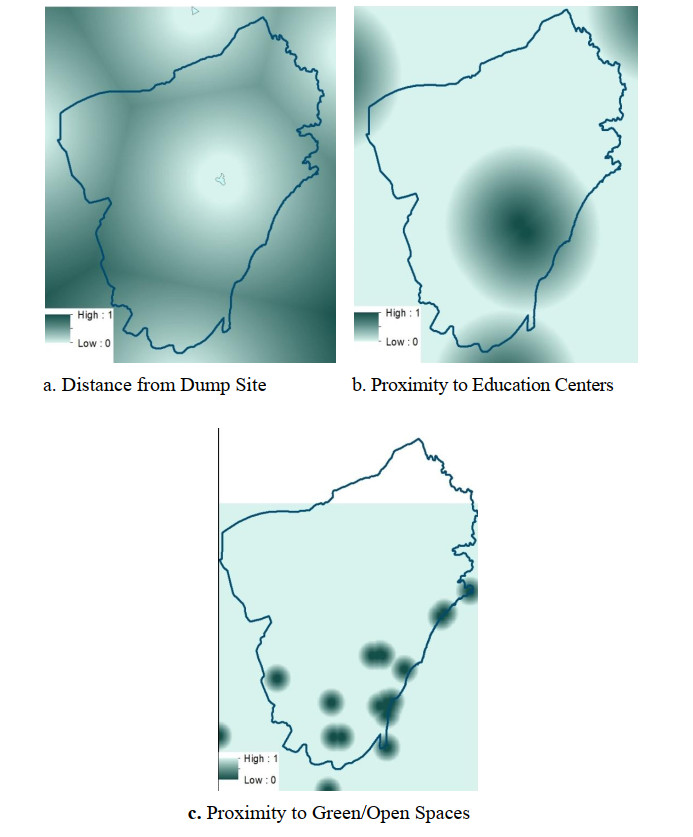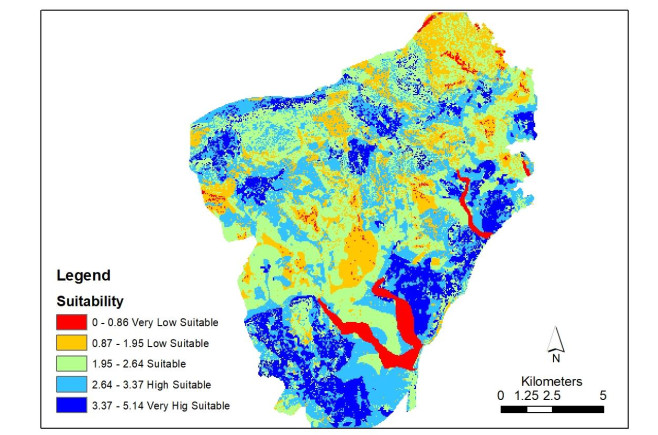1.
Introduction
There is no doubt that urban growth and population increase have dramatically increased recently. Accelerated urban development patterns bring a loss of primary soil and fragile environmental zones in many countries. More than half of the world's population has been living in cities since 2007. Moreover, that percentage is expected to increase to 60% by 2030. Additionally, 68 percent of the world population is predicted to be living in urban settlements by 2050 [1]. Today, the level of urbanization is around 75 percent, and it expects to increase to approximately 83.7% in 2050 [2]. Of the 65 million people living in Small Island Developing States (SIDS) today, 38 million (59%) already live in urban settlements [3].
It is evident that the ratio of urban population has risen each year, and the urbanization ratio also has higher values in developing countries. Particularly SIDS have fragile and vulnerable environmental resources, and they have to be used sustainably. In many SIDS, the urbanization process and urban sprawl bring many problems related to resource efficiency in the utilization and management of urban land.
Protecting environmental features while developing compact urban growth by supporting equal access to amenities or services is vital for sustainable development goals. Since SUG requires different dimensions and policies, it has a complex and complicated structure; there are many different criteria or sub-goals to be considered. Due to this, multi-criteria evaluation is required. In order to protect and secure urban growth within sustainable development policies, planning tools and geographical information systems based on spatial suitability analysis may require a multi-criteria decision-making process.
MCE is a widely accepted and commonly used method for suitability assessment for different fields and purposes. Hassan et al., 2020 incorporate the Analytical Hierarchy Process (AHP) and GIS to evaluate and select appropriate urban growth areas on Failaka Island, Kuwait [4]. The environmental suitability criteria list is generated from the sustainable urban growth development policies. Feizizadeh and Blaschke (2013) use AHP and GIS to optimize land resources for agricultural production in Tabriz County, Iran and construct a multi-criteria spatial decision support system for Ecological land suitability analysis through spatial indicators [5]. In this study, Analytical Network processes and Ordered Weighted Averages are integrated. Bathrellos et al., 2017 combine AHP and GIS to develop a multi-hazard map representing suitable areas for urban growth for northeastern Peloponnesus in Greece [6]. Scenario-based spatial suitability analysis for land use planning is used for coastal areas in Malaysia [7]. GIS-based Fuzzy Method is also implemented for urban planning in St. Petersburg, Russia [8]. The fuzzy-based land allocation method is also applied for sustainable urban land use planning in Nanjing, China [9]. Comparison of AHP and Fuzzy AHP spatial multi-criteria analysis is used to identify suitable urban infrastructure locations [10]. These given methods and GIS-based multi-criteria evaluation applications show the extensive use of geo-information technologies in many areas such as natural resource management, environmental pollution, and hazard control, regional planning, urban development planning. They support the decision-making processes in sustainable development.
As given above, the Trikomo Region should be considered within the spatial, environmentally sustainable development perspective by using spatial decision support tools. This study aims to implement spatial multi-criteria evaluation in the Trikomo region.
2.
Trikomo region
The study area is located north-east of Cyprus Island (see Figure 1). It approximately covered an area of 212 square kilometers and housed a population of 7906 in 2011 [11]. It is one of the most popular destinations in the Eastern part of Cyprus. Attractive coastal zones and recreational sites have high accessibility for tourists and residents.
It is clear that, after the Annan Plan Period, housing development projects have been dramatically increased in the Northern part of Cyprus. Annan Plan is the United Nations (UN) solution plan supporting the island's reunification under the United Cyprus Republic's name in a bi-zonal federal structure comprised of two constituent states [12]. The plan removes some of the uncertainty about the property for Northern Cyprus and brings assurance in this context. The practice that the fundamental development brought by the Annan Plan would give rise to rights also gave foreigners an assurance regarding the residences, most of which were built on Greek properties [13]. As a result of the Annan Plan, the link between real GDP, construction, and house ownership sectors in North Cyprus has been substantially disrupted [14].
Additionally, coastal urban design projects in Longbeach Region increased the attractiveness of the study area. Therefore, many housing projects have been realized by developers. Table 1 presents the number of housing units by year in Trikomo. According to Table 1, the total number of housing units has risen from 2491 to 8597 within seven years. Approximately 2400 housing units have been developed by the year 2017.
According to State Planning Organization data, the total number of residences of the Trikomo Region in 2011 was stated as 2491. Value has increased; the number of houses that have been licensed and built over the years is relatively high in 2018. As can be seen figure 2, urban class changes have dramatically increase particularly in southern and eastern coastal areas.
Low-dense scattered urban development is expected to ignore main sustainable urban development principles such as sustainable energy use and the risk of converting natural and agricultural areas to urban type. Moreover, spreading low-dense urban development and urban activities offer more air pollution and area loss because of the increase in private car circulations. Furthermore, uncontrolled urban development has resulted in the loss of good agricultural land near the city, impacting the source of livelihood for the great majority of people who rely on agriculture.
The sustainable urban form should include higher-density housing areas, direct and improved accessibility to urban centers [15]. Minimization of urban sprawl is required to achieve sustainability in urban areas. Requires controlling growth from the urban periphery and integrating land use schemes with proper transportation systems and properly distributed ecological and recreational activities. European Commission (EC) proposes a compact urban form by controlling the physical expansion of towns and cities for sustainable spatial development in Europe [16]. The compact urban form will reduce cost and energy usage in traveling and improve accessibility for urban services [17].
As shown from Figure 3 above, primary soil areas are under pressure due to scattered urban growth. Limited and fragile primary soil of the study area is in danger. Therefore, Trikomo Region requires sustainable urban growth policies to protect the environment while economic development continues.
3.
Methods and materials
3.1. Problem framing and criteria selection
In order to implement spatial MCE analysis that supports SUG, a literature review for SUG policies was realized. SUG has different dimensions, such as economic development, environmental protection, and social equity. These main policies are derived from different dimensions of economic, environmental, social, and physical nature. Moreover, main policies are supported by sub-policies such as targets related to the main ones. Selected each sub-policy is transferred to spatial parameters for improving the land-use suitability degree within the MCE process. Complete criteria selection and analysis flow are simplified by Figure 4.
UN adopted the 2030 Agenda for sustainable development that include 17 sustainable development goals (SDGs). SDG Goal 11 aims to make cities and human settlements inclusive, safe, resilient, and sustainable. Goal 11 also targets such as to provide accessible green and public spaces (see SDG 11.7). Alternatively, protecting and safeguarding the world's cultural and natural heritage (European Spatial Development Perspective (ESDP) promotes polycentric urban growth that supports better access to different services with the protection of cultural and natural heritage [18]. The American Planning Association (APA) also advocates an intelligent growth policy based on efficiency. Moreover, sustainable land use planning incorporates redevelopment models to optimize facility investments and consume less land for agriculture, open spaces, natural systems, and rural lifestyles [19]. These targets, policies, and sub-policies are added as SUG policies and spatial criteria in Table 2 [6,18,19,20,21,22] (see Table 2). In addition to different resources, local experts from different departments suggest additional sub-policies too. Some of them were eliminated due to the lack of data availability.
It is essential to develop a proper spatial database for analyzing spatial suitability in terms of sustainable urban growth. From that point, available data related to these dimensions are collected from local offices and prepared as spatial layers for further spatial analysis. Spatial criteria layers and data sources are given in Table 2.
3.2. Fuzzy logic and overlay analysis
Fuzzy Overlay is one of the most common methods for site suitability analysis studies [23,24,25,26,27,28]. The study of Fuzzy Overlay is based on the set theory. Set theory is a mathematical discipline that quantifies the relationship between phenomena and particular sets [23].
Fuzzy Overlay follows the basic overlay analysis measures discussed above but varies in the sense of the reclassified values and the effects of the combination of various parameters. The first three stages are the same—define the challenge, divide it into sub-models, and classify substantial layers. Fuzzy Overlay analysis reclassifies or translates data values to a standard scale. Selected criteria layers and developed spatial criteria vector files were converted to a raster format (30 × 30 m Grid). Fuzzy Membership (Fuzzy transformation) converted distance values into a 0–1 type raster map for overlay analysis in the ArcGIS environment (see Figure 5a-b). Fuzzy Membership assists the user in determining if a site is appropriate or unsuitable. This phase assigns values ranging from 0 to 1, with 0 indicating that it is unlikely or inappropriate and one indicating that it is most probable or suitable. As a result, the greater the fuzzy membership value represents, the better the site suitability for selected layer or criteria. From that point, all selected criteria were converted by using the Fuzzy Membership function for the study area (see Figures 6, 7 and 8). The linear Fuzzy Membership function was found suitable for distance or proximity. Local experts' interviews selected linear Fuzzy function minimum and maximum values (See Table 3). Some criteria layers are not suitable to use a linear fuzzy function such as Slope, Soil, and Vegetation. These layers were ranked from minimum to maximum. Slope criteria were separated into five classes, and maximum value (1) was given preferably. Primary and secondary soil classes were assigned as unsuitable (0), while III-IV classes as 0.50 and V-VI-VII were 1. Forest, water, wetland, orchards, and existing urban pixels were selected as unsuitable (0). Bare ground, Ag-Dry, and grass zones were defined as suitable for urban growth (see Figures 6, 7 and 8).
After developing suitability maps for each criterion, overall suitability for the study area should be obtained. Weighted linear combination (WLC), also called Simple Additive Weighting (SAW), is one of the simplest and best-known multi-criteria decision-making methods for suitability analysis. This method involves normalizing inputted maps, assigning relative importance weights to input layers, and combining the weights and the standardized matching maps to obtain an overall suitability value [29]. The decision-maker gives relative weights to each attribute. Once the significance weights for each attribute have been multiplied, a total score may be calculated for each choice [30]. In the study area, criteria weights are assumed as equal according to the local experts. It is possible to use different ranking or weighting alternatives for suitability analysis in the study area.
As mentioned before, SAW was utilized to construct an overall suitability map for SUG. In order to obtain the final suitability map (Figure 9), eleven fuzzy maps were combined (overlaid) by using the suitability formula (Eq 1). The Raster calculator was also used to get final results by using criteria maps.
Where Wj is the relative importance weight of criteria j; Xij is the area (i)'s standardizing value under criterion j; n is the number of criteria. These fuzzy map criteria are also combined with the flood risk analysis maps to eliminate possible risk zones for urban growth in the study area [31].
4.
Results
The final suitability map (Figure 9) shows that some highly suitable locations can be seen in the south and eastern side of the study area. Nevertheless, the central zone and the northern part of the study region have weak suitability values for SUG. According to the map, darker colors represent higher values in terms of suitability. Many places are ideal locations because they are readily available. This concept complements the urban compact development strategy in the case area. The closest areas to the existing road network appear to have higher values too. According to the final evaluation results of fuzzy overlay analysis, 6 percent of the study area is in a shallow suitability zone. Forty-four percent of it has very low and low suitability for SUG. Additionally, 41 percent of the area is suitable. Only 12 percent of the area has high and very high suitability values. These findings showed that approximately 118 square kilometers (56 percent) of the city is within the same level appropriate for urban development.
5.
Conclusions
This study sought to explore suitable areas for SUG in the Trikomo Region. Available eleven geographical parameters were used for analysis based on the availability of evidence and expert opinion on geographic characteristics. They also combined important constraint flood risk maps for supporting SDG Goal 11. These parameters may be further extended to thresholds or weights depending on the form of analysis. The key parameters and weights depend on the significance of the criteria based on the vision of the planning issues. The weights for the criteria are accepted as being equal to each other in this study. The main concept is to protect sensitive zones in cities when planning urban growth directions in fragile environments. GIS and MCE for land use assessment in rural and urban planning are of high potential for SUG. This strengthens the science of land use planning; it leads to a more robust forum for evaluating land suitability for urban and rural growth. GIS and MCE could be used as spatial planning support tools for urban planners and decision-makers in the study area. Such a tool helps to assist in testing administrative planning strategies or spatial goals, which influences the decision-making process in the planning process. This may help to understand spatial factors that affect development and consequently give a chance for assessing alternatives through SUG. Finally, future studies on this topic can be reviewed and improved.
Conflict of interest
The authors declare no conflict of interest.
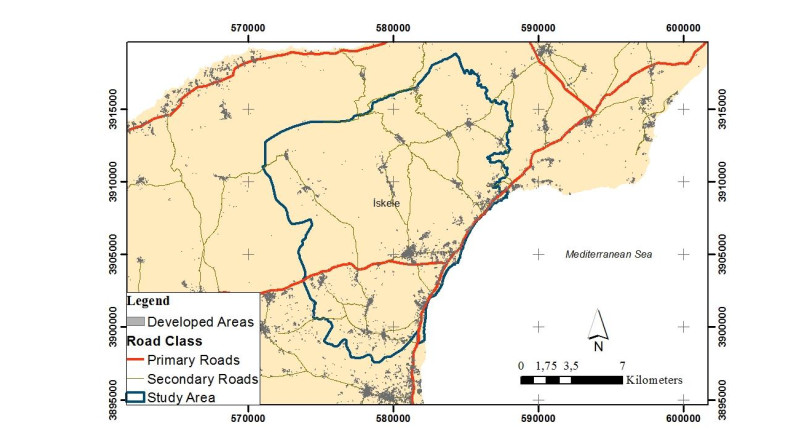









 DownLoad:
DownLoad:
